This year we received an Education Scotland CLPL grant to train staff in digital skills; for part of the project we have been learning computer science and technology to do with robotics. A grant from the DigitalXtra fund has also allowed us to purchase robotics equipment from early years up for the cluster, and has enabled the children to learn computer science outcomes in a meaningful way though programming their own robots. This has been a really engaging way for pupils and teachers to engage with what can be quite tricky computer science concepts.
In Early years we used coda-pillars, Dash and Dot, Rugged Robot, Beebot and Spheros to show our understanding of computational thinking by coding the robots to follow an algorithm.
We learned all our computational thinking concepts using Barefoot Computing online, a fabulous and flexible resource.
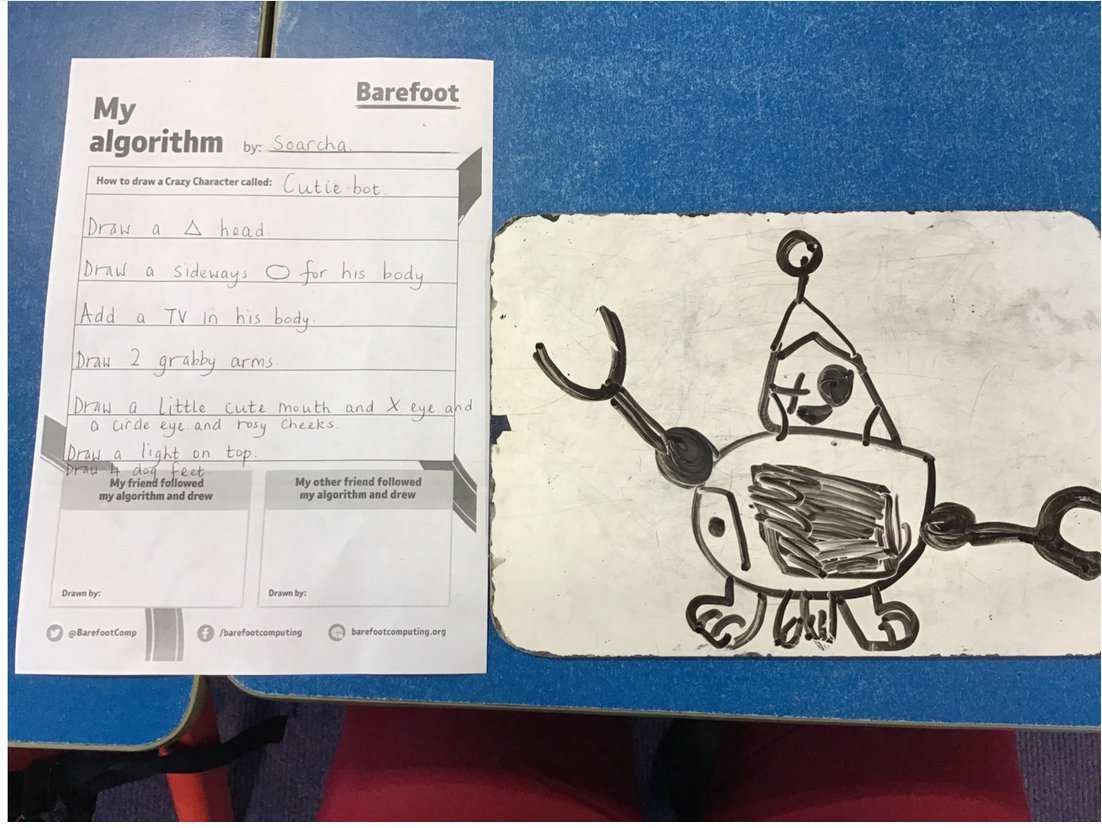
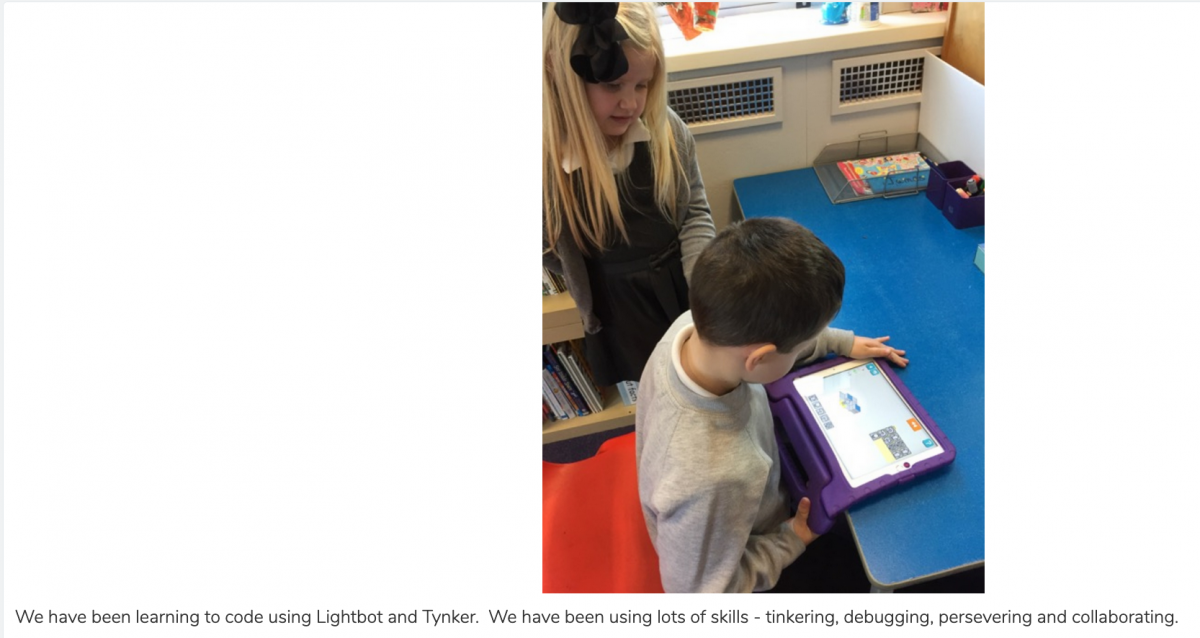
We found there were lots of online resources that worked well even down to Early years and we made good use of them- lots of tinkering going on!
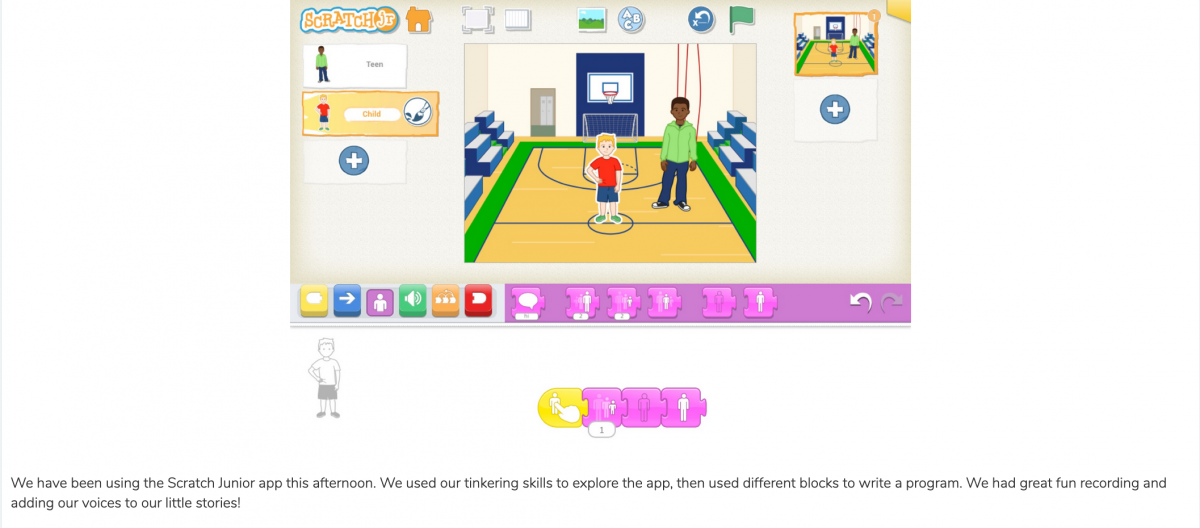
We made maps for the robots to move around and made them flash and play music as well as they followed the algorithms.
We then came up with our own designs for robots using engineering design principles and built them out of junk.
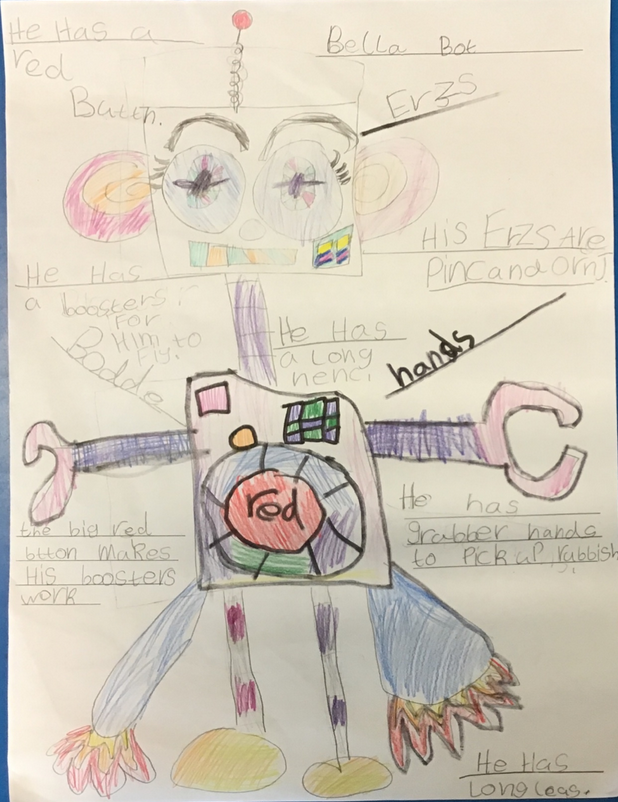

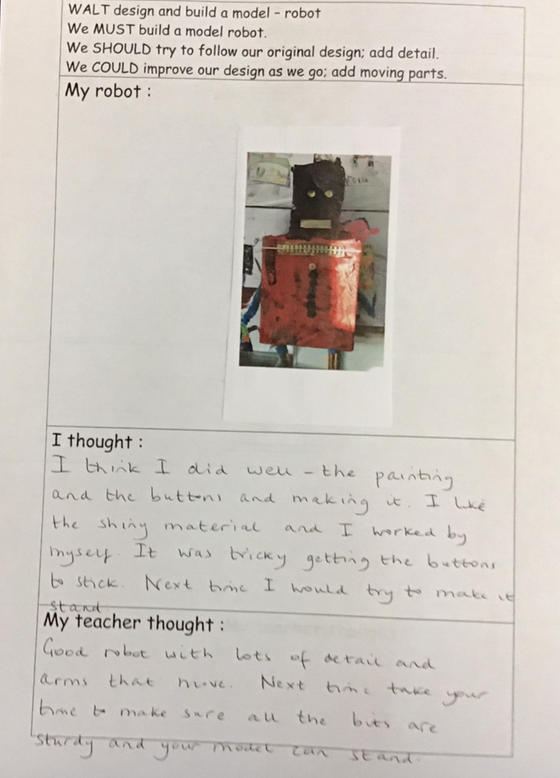
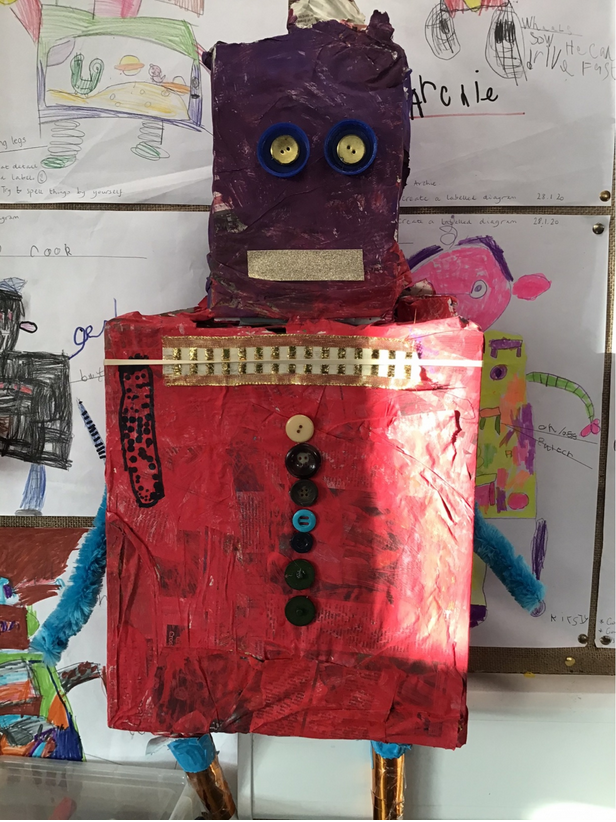
We think the robots looked fantastic!
Primary 3/4/5 have also been learning about robots and designing their own. They learned about computational thinking and applied their skills making jam sandwiches and in Scratch. They experimented with different robots like Spheros and Dash and dot. With help from P67 they learned how to program Microbits to record temperatures and used this as a data handling high quality maths assessment.
First they designed their robots using engineering and iteration.
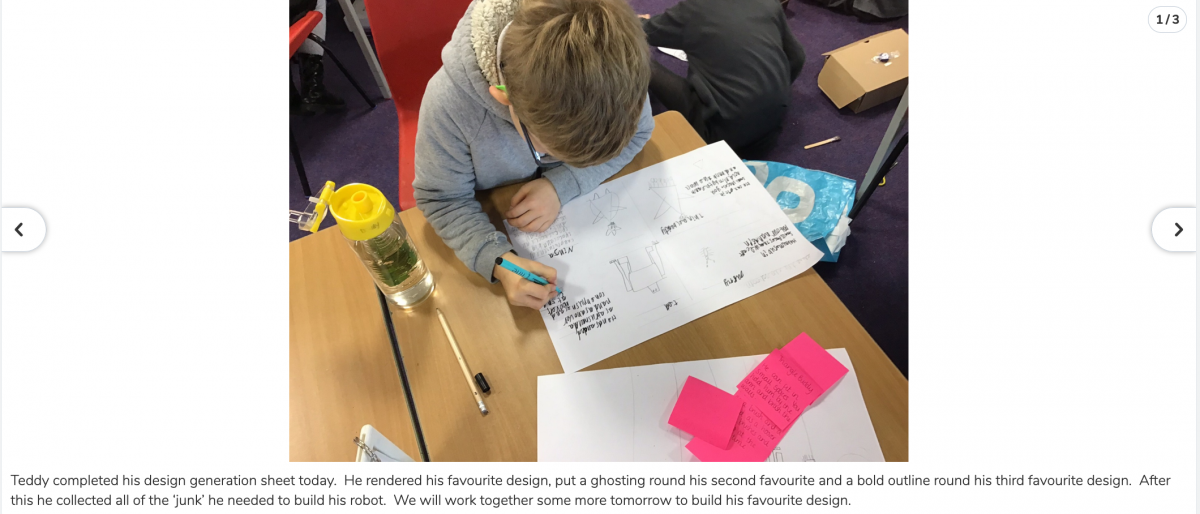
They then chose to program their microbits as part of their final robot design. The builds were very imaginative.
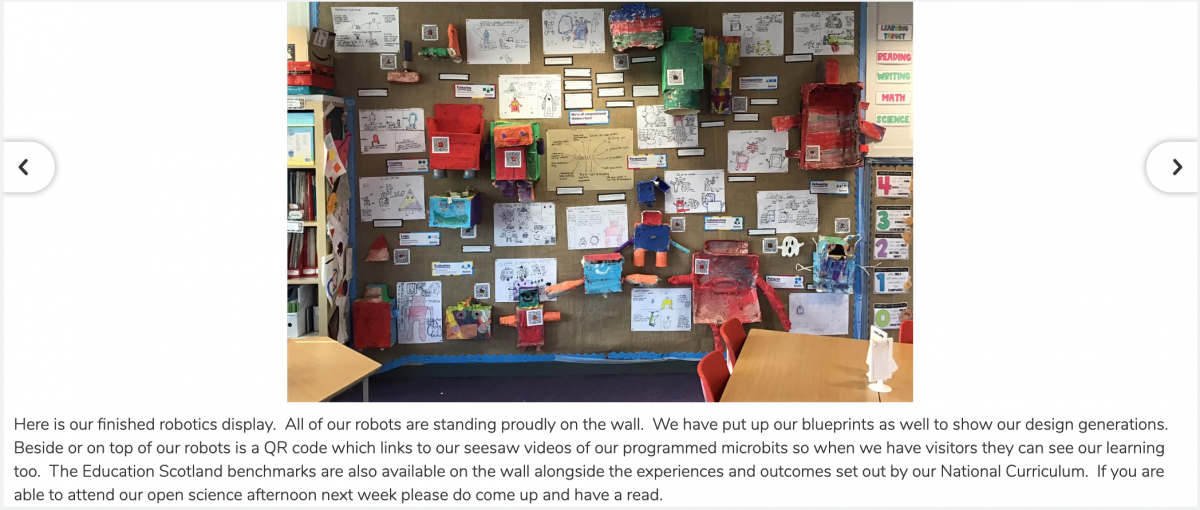
With more experience of coding through Scratch and hour of code, P67 were able to take on more challenge. They learned to use blocks rather than tracks to code the Spheros and were able to use them in maths to learn about angles in polygons by programming them to draw shapes using conditionals and loops, also programming games. They then learned how to program Microbits.
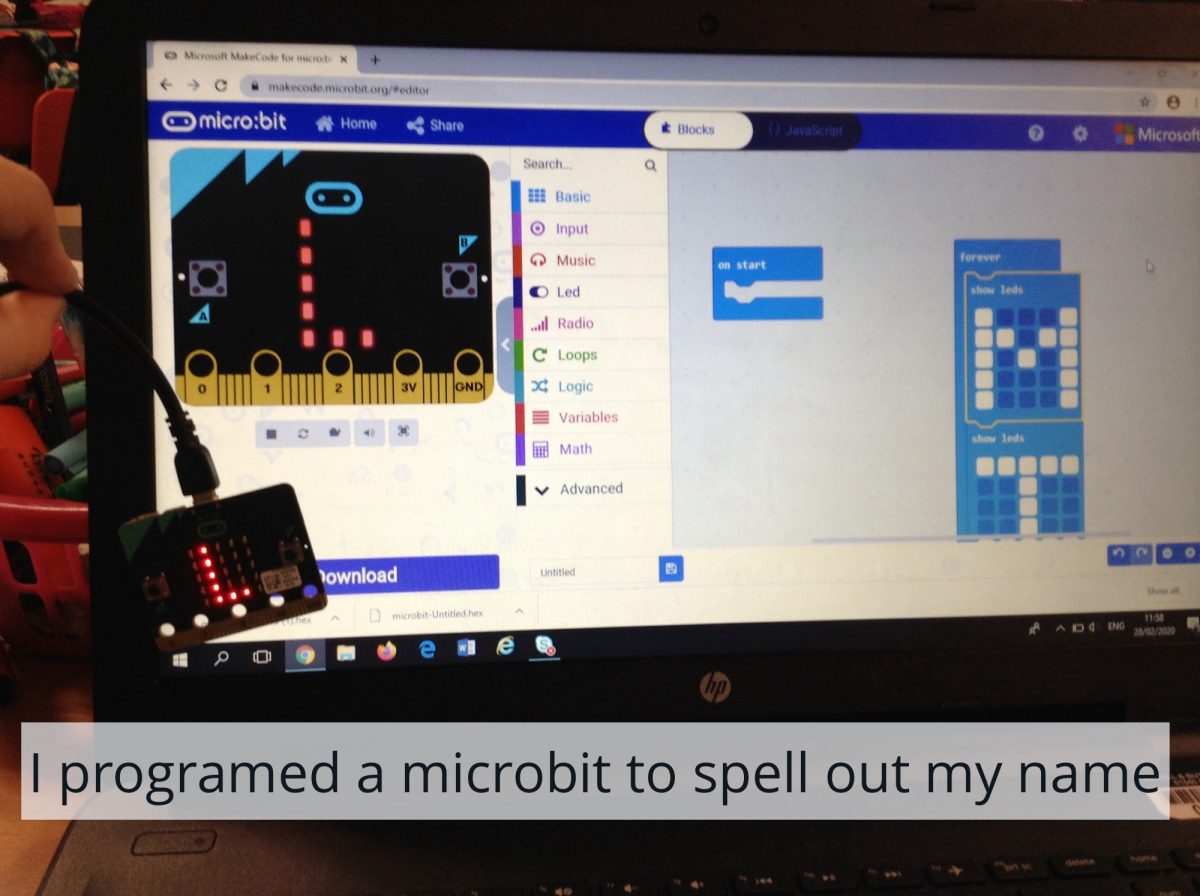
Their final challenge was to look at Robotics holistically and design a robot to solve one of the world’s/Islay’s problems by using the sustainable development goals as a framework. I adapted a Sway I found to structure their learning and used the great new tools on the new Microbit website which include programming based around the SDGs.
The children then used a design sheet to plan their robots.
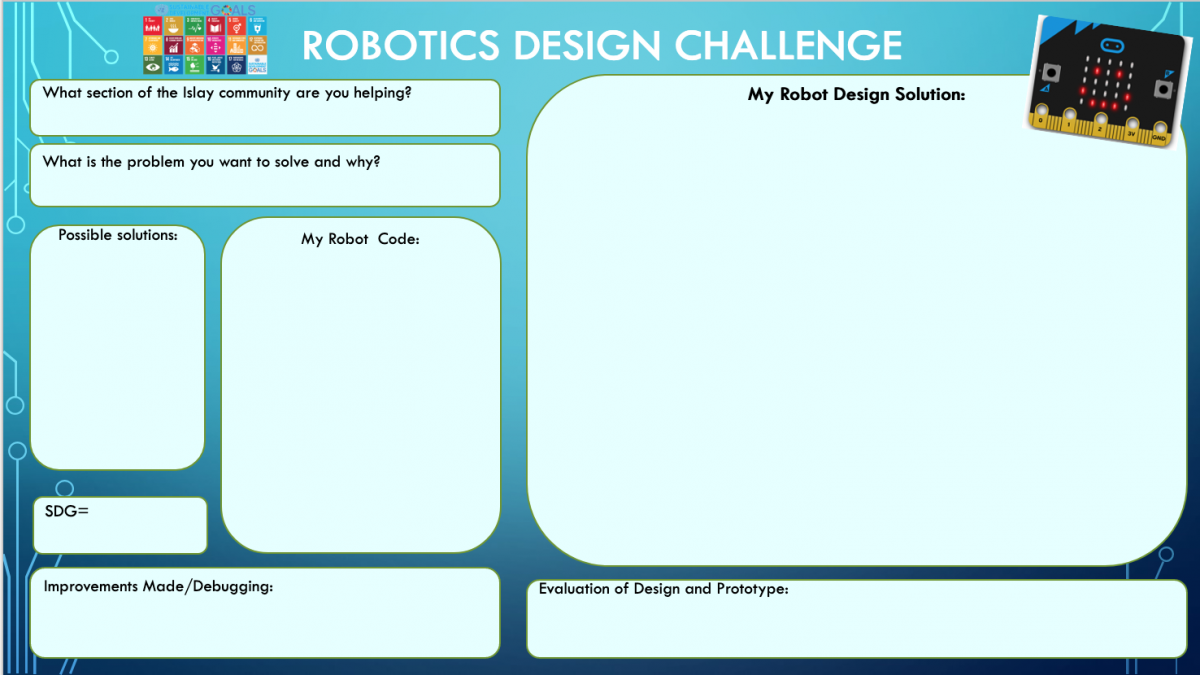
For the elderly of Islay we had robots that were pedometers designed to help them keep fit and robots that made an alarm if the temperature got too cold to warn you it was icy out. For children we had a robot that timed you washing your hands to prevent Coronavirus by playing Happy Birthday and one that timed you brushing your teeth. For Farmers a child programmed a microbit to light up when dark, that could be fixed onto black Cows so they were easy to spot if on the road at night (cows are often free range on Islay!). Another light sensitive device was to warn dolphins of underwater turbines at night.
The schools designs were then all shared with parents at an open afternoon in Science week, where children had to explain, demonstrate and discuss their new found digital skills. It was clear lots of new digital skills were learned by everyone.



















 As part of our Transport topic, P1/2/3 wanted to find out all about cars, how they worked and what made cars go faster. So they wrote to Dugald McKerral and went on a trip to the garage. They saw a car up on the hydraulic ramp and could see the wheel axels and the chassis that they had learned about in class. Lots of interesting questions were asked and we are going back to class to find out more about pistons. This learning ties in really well with the Rolls-Royce Science Prize.
As part of our Transport topic, P1/2/3 wanted to find out all about cars, how they worked and what made cars go faster. So they wrote to Dugald McKerral and went on a trip to the garage. They saw a car up on the hydraulic ramp and could see the wheel axels and the chassis that they had learned about in class. Lots of interesting questions were asked and we are going back to class to find out more about pistons. This learning ties in really well with the Rolls-Royce Science Prize. Islay is a beautiful island off the west coast of Scotland, and one of the reasons it is so lovely is because farmers work hard to keep the land the way it has looked for generations, conserving the environment. But the land has also influenced how and what types of farming happen on Islay. As an Island the costs of transport are also an important consideration, as is the weather. All these factors contribute to the difficulties and successes of farming beef, sheep and barley on Islay.
Islay is a beautiful island off the west coast of Scotland, and one of the reasons it is so lovely is because farmers work hard to keep the land the way it has looked for generations, conserving the environment. But the land has also influenced how and what types of farming happen on Islay. As an Island the costs of transport are also an important consideration, as is the weather. All these factors contribute to the difficulties and successes of farming beef, sheep and barley on Islay.

 Over the past year all the primary schools on Islay and Jura have been involved in an Island wide history project in conjunction with Islay Heritage and archaeologists from the University of Reading.
Over the past year all the primary schools on Islay and Jura have been involved in an Island wide history project in conjunction with Islay Heritage and archaeologists from the University of Reading.  The children have been learning about their history and heritage, as well as the many STEM skills required to be an archaeologist. The results of their learning are now on display in the Gaelic College, Ionad Chaluim Chille Ile, in the Islay and Jura School’s Heritage Exhibition.
The children have been learning about their history and heritage, as well as the many STEM skills required to be an archaeologist. The results of their learning are now on display in the Gaelic College, Ionad Chaluim Chille Ile, in the Islay and Jura School’s Heritage Exhibition. The project started with a party from every primary school on Islay visiting the Giant’s Grave site, 90 children in all. This involved a lengthy walk from Nerabus up through the forestry to the site, where the archaeologists were excavating and surveying. The children were then able to experience the different fieldwork techniques, from geophysics to troweling to photography. They learned about life in the early Neolithic period, and discussed with the experts what the grave was for, how it might have looked and how the people at the time lived. They then returned to the classroom to continue the learning, carrying out many different tasks; timelines, brochures, reports, sways, story telling videos, den building, pot making, art and imaginative writing. Some of these can be seen on the
The project started with a party from every primary school on Islay visiting the Giant’s Grave site, 90 children in all. This involved a lengthy walk from Nerabus up through the forestry to the site, where the archaeologists were excavating and surveying. The children were then able to experience the different fieldwork techniques, from geophysics to troweling to photography. They learned about life in the early Neolithic period, and discussed with the experts what the grave was for, how it might have looked and how the people at the time lived. They then returned to the classroom to continue the learning, carrying out many different tasks; timelines, brochures, reports, sways, story telling videos, den building, pot making, art and imaginative writing. Some of these can be seen on the  Then in late March the archaeology team returned for phase 2 of the project, in which schools adopted their own local monument and carried out surveys. Children applied some of their previous learning on Geo-physics and photography, whilst also learning how to make scale drawings and documentaries. They then got to see the results of the survey transferred into 3D representations of the site. Bowmore surveyed Cill a’ Bhulig, the remains of an old chapel, Port Charlotte surveyed Carnduncan, a Bronze Age burial cairn, Port Ellen surveyed Kilbride Chapel and Small Isles and Keills surveyed a crannog at Loch nan Deala.
Then in late March the archaeology team returned for phase 2 of the project, in which schools adopted their own local monument and carried out surveys. Children applied some of their previous learning on Geo-physics and photography, whilst also learning how to make scale drawings and documentaries. They then got to see the results of the survey transferred into 3D representations of the site. Bowmore surveyed Cill a’ Bhulig, the remains of an old chapel, Port Charlotte surveyed Carnduncan, a Bronze Age burial cairn, Port Ellen surveyed Kilbride Chapel and Small Isles and Keills surveyed a crannog at Loch nan Deala. It has been a great learning experience for all involved and made us grasp just how much fascinating history we pass on Islay everyday without even realizing it. The process of revealing Islay’s past through the use of modern archaeological techniques has been a truly great experience, and the children have a far better understanding of their Island as a result. We would like to thank all those involved for providing us with the experience, including the Mactaggart fund for enabling the project to take place. We hope people will visit the exhibition over the next two weeks for a unique insight into Islay’s past.
It has been a great learning experience for all involved and made us grasp just how much fascinating history we pass on Islay everyday without even realizing it. The process of revealing Islay’s past through the use of modern archaeological techniques has been a truly great experience, and the children have a far better understanding of their Island as a result. We would like to thank all those involved for providing us with the experience, including the Mactaggart fund for enabling the project to take place. We hope people will visit the exhibition over the next two weeks for a unique insight into Islay’s past.

 On the 25th of August, Port Ellen Primary along with their teacher Mrs Clark, Mr Gairns, Mrs Logan and Struan’s dad Mr Colthart, went to a fascinating archaeological trip to the Giant’s Grave. We were going there because we really wanted to learn about Islay History. As we got onto the bus, I was filling up with excitement. We were in the bus for quite a while until we got to Nerabus. As we got off the bus, I couldn’t wait to start walking to the Giant’s Grave. Also, Professor Steven Mithin walked with us.
On the 25th of August, Port Ellen Primary along with their teacher Mrs Clark, Mr Gairns, Mrs Logan and Struan’s dad Mr Colthart, went to a fascinating archaeological trip to the Giant’s Grave. We were going there because we really wanted to learn about Islay History. As we got onto the bus, I was filling up with excitement. We were in the bus for quite a while until we got to Nerabus. As we got off the bus, I couldn’t wait to start walking to the Giant’s Grave. Also, Professor Steven Mithin walked with us. On the trip, we walked one hour and ten minutes to the Giant’s Grave. Before we got there, my friend Abi fell into a big stream and got soaking wet. When we were all set we started walking again. On the way, we saw loads of blood red and white mushrooms. They looked really interesting. Finally we got to the Giant’s Grave. I thought it looked amazing and very inspiring. It was as peaceful as the sun crawling up a hill. As we were strolling to the heart of the dig I gazed at the awesome rocks forming the Giant’s grave.
On the trip, we walked one hour and ten minutes to the Giant’s Grave. Before we got there, my friend Abi fell into a big stream and got soaking wet. When we were all set we started walking again. On the way, we saw loads of blood red and white mushrooms. They looked really interesting. Finally we got to the Giant’s Grave. I thought it looked amazing and very inspiring. It was as peaceful as the sun crawling up a hill. As we were strolling to the heart of the dig I gazed at the awesome rocks forming the Giant’s grave.




 In P567 we have been doing geology this term, finding out about Islay’s interesting rocks and how they are formed. Parents got to make rocks out of food, saw a cake model of the earths crust, our map of Islay’s geology and identified different types of rock by testing them. They asked lots of interesting questions!
In P567 we have been doing geology this term, finding out about Islay’s interesting rocks and how they are formed. Parents got to make rocks out of food, saw a cake model of the earths crust, our map of Islay’s geology and identified different types of rock by testing them. They asked lots of interesting questions!